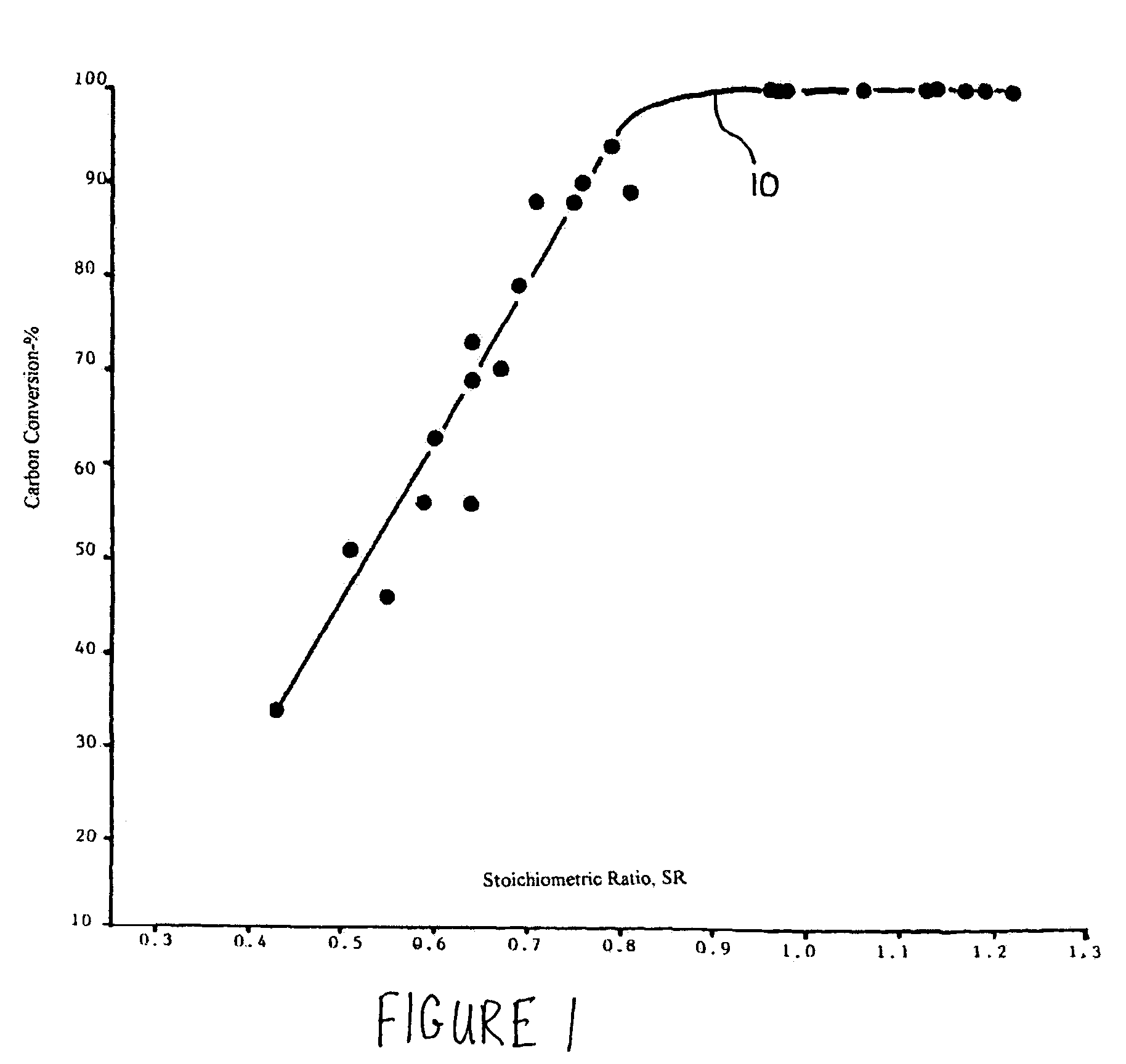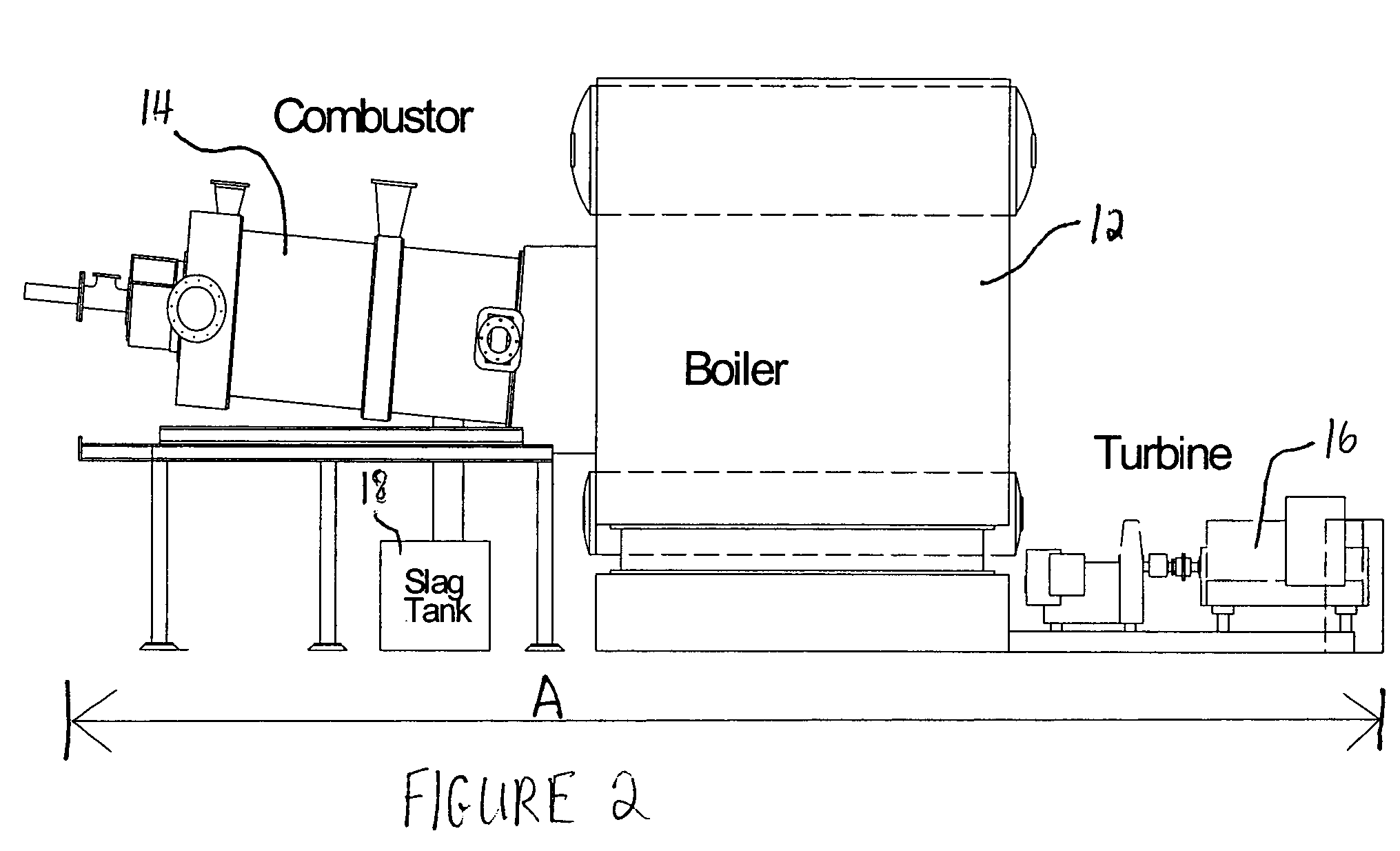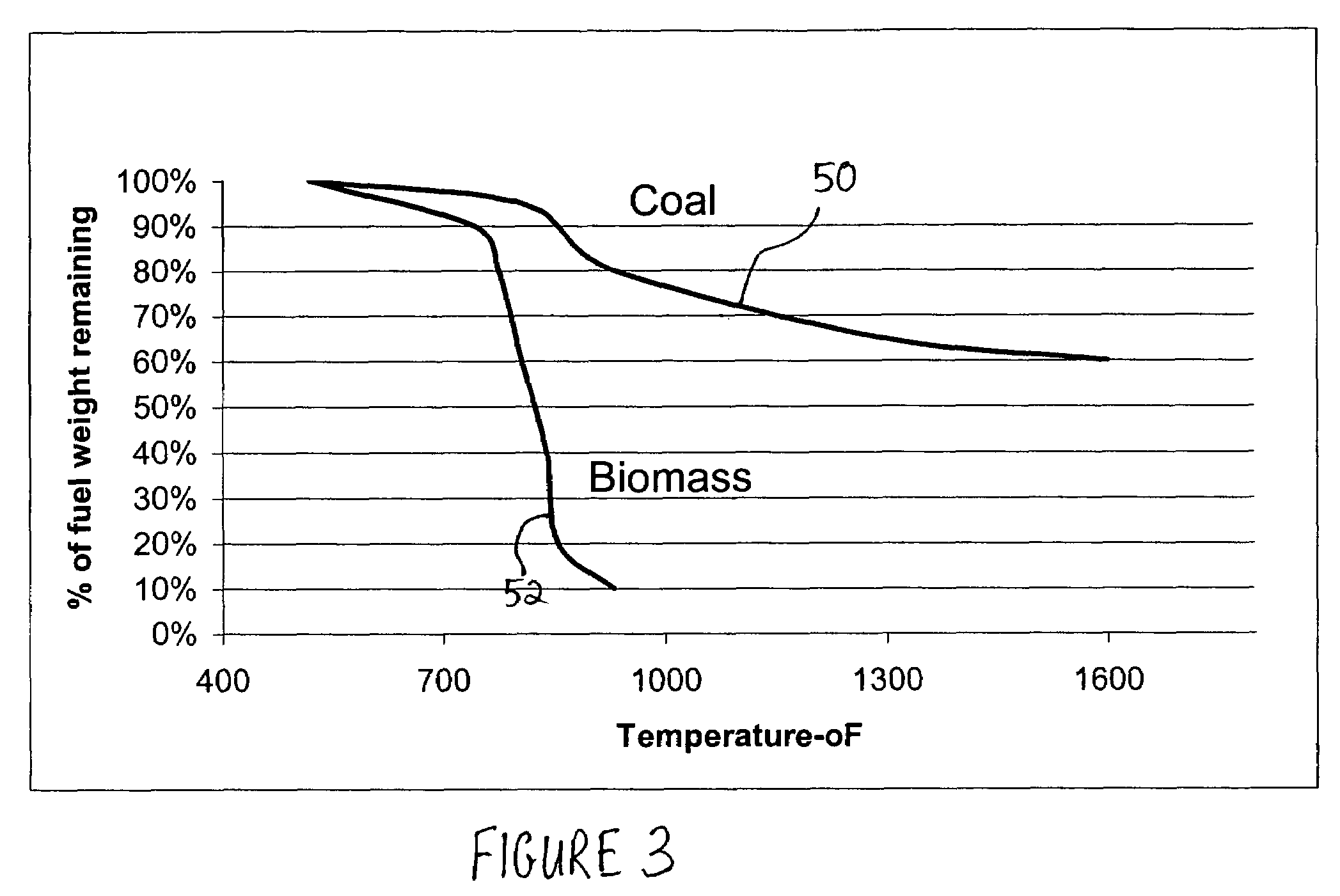Production of hydrogen and removal and sequestration of carbon dioxide from coal-fired furnaces and boilers
a technology of carbon dioxide and production method, which is applied in the direction of hydrogen sulfides, chemical/physical processes, energy input, etc., can solve the problems of not going into effect, affecting the life of people, and emitted by coal-fired plants
- Summary
- Abstract
- Description
- Claims
- Application Information
AI Technical Summary
Benefits of technology
Problems solved by technology
Method used
Image
Examples
Embodiment Construction
[0027]The invention has several aspects and provides methods and apparatuses that, when used alone or in combination, may significantly reduce or eliminate carbon dioxide (CO2) emissions from power plants that burn solid fuels, particularly coal-fired power plants. The features of methods for reducing CO2 emissions according to the invention may be used in various combinations with one another and include both temporary storage methods and more permanent sequestration methods. As will be described below in more detail, embodiments of the invention also provide for hydrogen production.
[0028]One temporary storage method comprises burning coal in the existing combustors of furnaces or boilers under fuel rich conductions so that the volatile matter in the coal and as much of the fixed solid carbon in the coal particles as desired are burned while the balance of the solid carbon remains unburned and passes out of the combustion zone of the furnaces or boilers with the fly ash. The carbon...
PUM
| Property | Measurement | Unit |
|---|---|---|
| pressure | aaaaa | aaaaa |
| temperature | aaaaa | aaaaa |
| electric power output | aaaaa | aaaaa |
Abstract
Description
Claims
Application Information
 Login to View More
Login to View More - R&D
- Intellectual Property
- Life Sciences
- Materials
- Tech Scout
- Unparalleled Data Quality
- Higher Quality Content
- 60% Fewer Hallucinations
Browse by: Latest US Patents, China's latest patents, Technical Efficacy Thesaurus, Application Domain, Technology Topic, Popular Technical Reports.
© 2025 PatSnap. All rights reserved.Legal|Privacy policy|Modern Slavery Act Transparency Statement|Sitemap|About US| Contact US: help@patsnap.com



